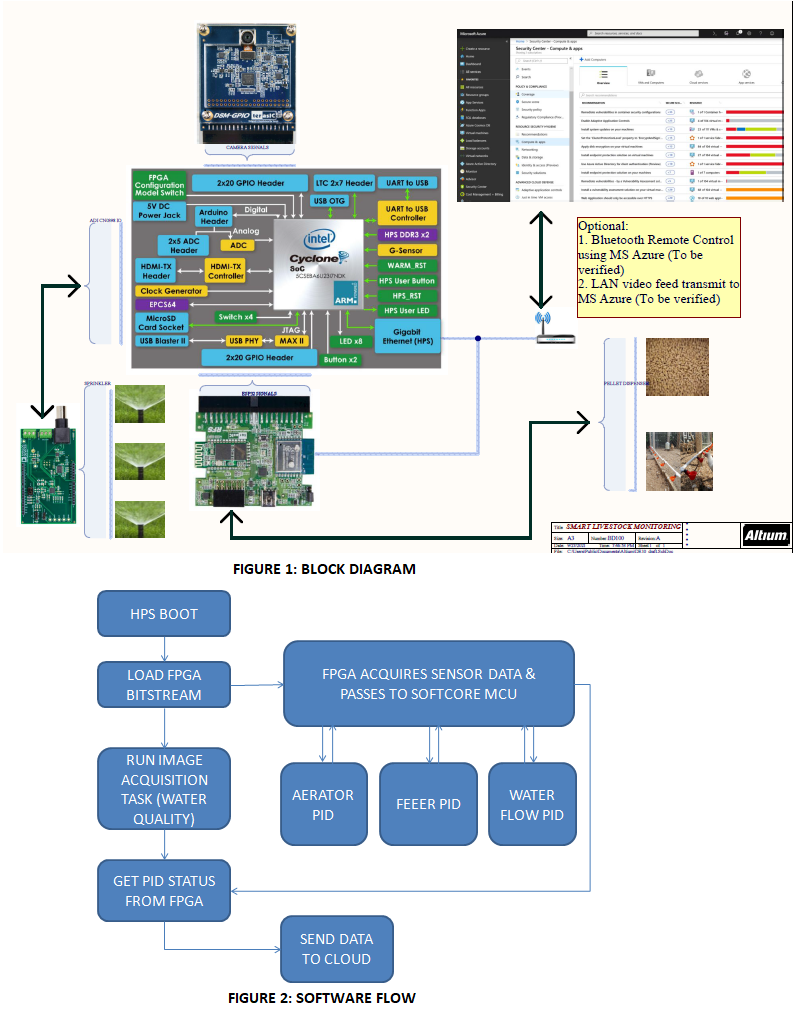The project is aimed to improve water distributor's capacity so everyone can use water even during dry and drought season.
Demo Video
Project Proposal
1. High-level project introduction and performance expectation
The project aims to provide a fully automated water filling system that efficiently reduces power consumption and ensures water is available all day for all subscribers even during dry and drought season in the Philippines.
The City of Maasin has one water district which supplies to more than 10,000 sq km of area and due to the mountainous regions sometime during the dry and drought season from April to June some subscribers have water available only at 2 - 4 hours with rotational scheduling. Not including here is the occassional no supply for a few days depending on the condition of the reservoirs.
What the water district often do is to run the pumps to get all available water but this is not efficient and reliable as water availability is undeterministic.
The main reason why we are using Intel FPGA for the design is because of Intel's well known popularity in the field with the availability of free tools and softcore IPs. I am knowledgeable in using the tools from Intel such as Quartus and Qsys for programming and simulation. In my work with Intel FPGAs, I find their FAE very supportive on my inquiries. Intel also has an abundant source of tutorials and application notes in their website.
2. Block Diagram
Please refer to below for the top level block diagram.
3. Expected sustainability results, projected resource savings
The design has several advantages and benefits over traditional manual operation.
The use of an FPGA makes possible for the high speed data acquisition from terasic camera and ADI daughter board sensors combined with Intel FPGA's parallel execution so that the timely determination of water availability and clarity can be obtained.
Together with Microsoft Azure IOT hub, a monitoring system can be established and water supply and level can be determined in a monthly basis. The system will also be able to predict the weather and which can pre-plan capacity measures.
I. LIVE TRACKING OF WATER LEVEL AND CLARITY
- The system will continously sense water level on the tanks and samples for water availabiltiy and clarity on the wells. This live monitoring provides necessary information on the supply and demand profile and could provide the necessary info for future expansion of capacity.
II. REDUCE COMMUNITY IMPACT
- With the efficient monitoring system, water supply will always be available and muddy or murky water will be avoided. This condition mainly impact human livelihoods and health.
III. EFFICIENT USE OF RESOURCES AND AREA
- The area will be much more effectively used as the need for more tank will be reduced. This is made possible as the system is closely monitored at all times ensuring water supply is always available.
IV. REDUCED LABOR AND MAINTENANCE
- With most of the functions automated by the system, 60% of the labor is reduced and the 40% is only done for maintenance and repair.
VI. INCREASED PROFIT
- It is estimated the project will overall increase profits.
4. Design Introduction
The design uses wireless technology to improve water conservation and usage. With azure IOT monitoring, it is possible to predict and improve the system efficiency.
Using FPGA enables the system to perform operations in parallel, that is FPGA can handle basic IO tasks run inside a softcore microcontroller or a state machine. This way, the core will not need to consume lots of power for processing and will focus on more OS extensive tasks such as communicating to outside world.
With cloud connectivity kit included, the project uses an ESP8266 D1 mini to gather sensor water level data, sensor temperature data and drive the pump.
FPGA uses parallel IO to acquire sensor data from the ESP8266 cloud connectivity kit and performs clean up tasks to maintain water level while passing sensor data to HPS via lightweight bridge.
Processor is configured for PaaS for Azure IOT for sending data for later view and analysis.
5. Functional description and implementation

6. Performance metrics, performance to expectation
1. Automated control, reduces labor and increases efficiency and system predictability.
- up to 20% better than existing
2. Lowers maintenance cost and improves water availability as the result of better data management.
- up to 40% lesser cost + lower maintenance
7. Sustainability results, resource savings achieved

8. Conclusion
To summarize, this project is able to leverage and provide solution especially to urban and well developed areas where water capacity is suffering from frequent outage due to the high demand or on rural areas where there is shortage of water source as it is still not yet fully developed. This impact has been amplified with the changing climate which provides unpredictable weather conditions.
The DE10-SOC has been a real key to this projects success and I believe there is no better hardware to implement the system more efficiently than this. Compared to microcontrollers or MPUs, FPGAs still provide the power and parallel operational effiency which cannot be matched.
In terms of the usage and availability of tools, I found it very easy to find and use the free tools. I was able to create my own FPGA rbf file in a few days and together with lib MRAA and lib UPM, it was possible to test sensors easily and immediately. With the free versions of MS Azure, it was possible to learn the tools and start deploying new cloud monitoring devices. I would also like to thank ADI for sponsoring the daughter board which is very informative and accurate in providing measurements for sensor acquisition without latency.

0 Comments
Please login to post a comment.